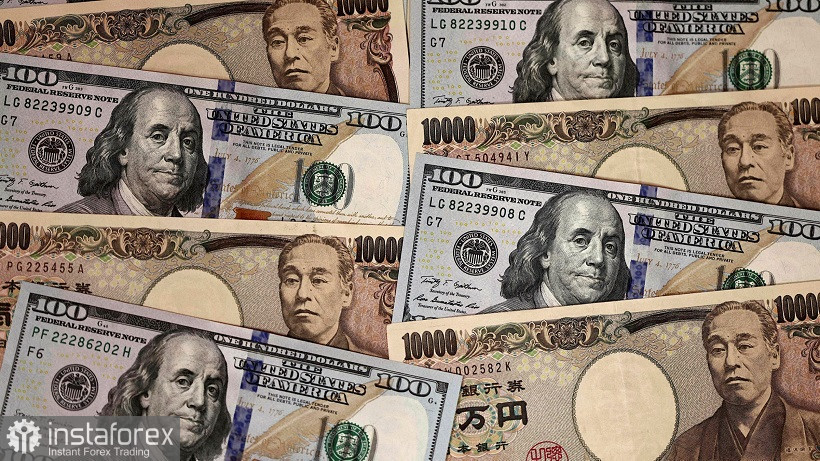The USD/JPY pair has reached a 20-year price high today, denoting itself in the area of the 131st figure. In the last two days alone, the yen has weakened by almost 400 points. Such record growth rates are due to two fundamental factors: firstly, this is the divergence of the rates of the Federal Reserve and the Bank of Japan (BoJ), and secondly, this is the growth of anti-risk sentiment in the foreign exchange market. The dollar is the beneficiary of the current situation, skimming the cream in all pairs of the major group. Speaking directly about the USD/JPY pair, here the Japanese central bank helped the bulls, as it summed up the results of its April meeting. BoJ Governor Haruhiko Kuroda gave the pair upward momentum, thanks to which the price shot up several hundred points.

In general, we did not expect anything extraordinary from today's meeting: the BoJ, as a rule, voices the same theses, keeping the main parameters of monetary policy unchanged. Traders are mostly accustomed to Kuroda's comments that the central bank can ease monetary policy parameters if necessary. Today, however, the Japanese central bank showed an extremely gloomy and dovish attitude in its statements of intent.
In particular, the BoJ significantly worsened the growth forecast for the Japanese economy in fiscal year 2022 (which begins in April). If earlier, namely in January, central bank economists predicted growth to 3.8%, now this benchmark has been reduced to 2.9%. At the same time, according to updated data, in 2021 the country's economy grew by 2.1%, and not by 2.8%, as previously reported.As for the decisions made at the meeting, the BoJ did not bring any surprises here: the interest rate on deposits of commercial banks with the central bank remained at -0.1% per annum, the target yield on ten-year government bonds is still around zero. At the same time, the BoJ emphasized that it would buy an unlimited number of bonds "every business day" (that is, every trading session) to maintain their yield level near the target 0% and not higher than 0.25%.
Commenting on the results of the April meeting, Kuroda once again stated that the BoJ will not follow the Fed in the context of raising rates. He said that "while central banks in the US, UK, Canada are moving towards tightening monetary policy or raising rates, the Japanese economy is still on track to recover from the impact of the coronavirus pandemic." Moreover, Kuroda expressed his readiness to ease monetary policy - he stressed that he would not hesitate to initiate appropriate steps if necessary, given the consequences of the coronavirus crisis.
Please note that the USD/JPY pair continued to demonstrate upward dynamics today after the disappointing report on the growth of the American economy. According to published data, US GDP in the first quarter of this year fell by 1.4%, while most experts predicted this figure to grow to 1.1%.
After today's "upward push", some analysts suggested that the BoJ may be worried about the excessive devaluation of the yen. However, here I will allow myself to disagree with this opinion. I note that Kuroda declined to comment on exchange rates today. However, he has repeatedly commented on the dynamics of USD/JPY. In one of his speeches at the end of last year, he even welcomed the weakening of the national currency. On the one hand, he acknowledged that the devaluation of the yen is hurting imports, driving up household costs as well. But, on the other hand, he noted that in general he does not consider the weakening of the Japanese currency to be a "negative fact". This year, Kuroda voiced a similar position (albeit in a somewhat veiled form) within the walls of the Japanese parliament. And two weeks ago, BoJ board member Asahi Noguchi even said that the benefits of a weak yen for the Japanese economy outweigh the drawbacks. In his opinion, an expensive national currency has "more painful consequences", in particular, in the form of deflation.
All this testifies to the further divergence of the monetary rates of the Fed and the BoJ. The divergence of the positions of the central banks, which has once again manifested itself today, will continue to push the pair up to new price heights. Therefore, it is advisable to use downward pullbacks to open long positions.
Thus, despite a record 20-year rise in USD/JPY, the yen will most likely continue to fall. The price is located on the upper line of the Bollinger Bands indicator, as well as above all the lines of the Ichimoku indicator on all timeframes (from the four-hour chart and above), which formed the bullish Parade of Lines signal. The nearest growth targets are 131.00 and 131.50.





















